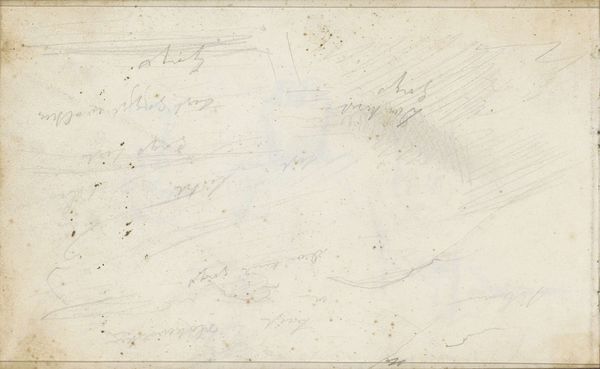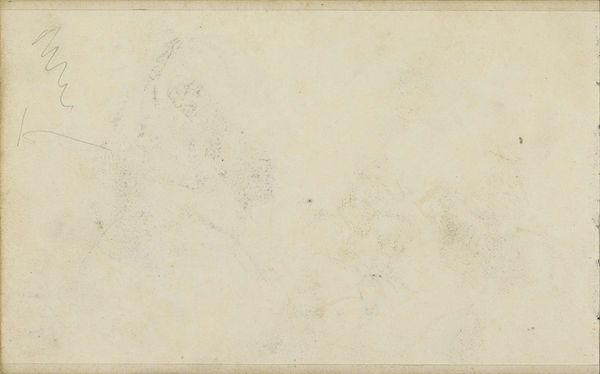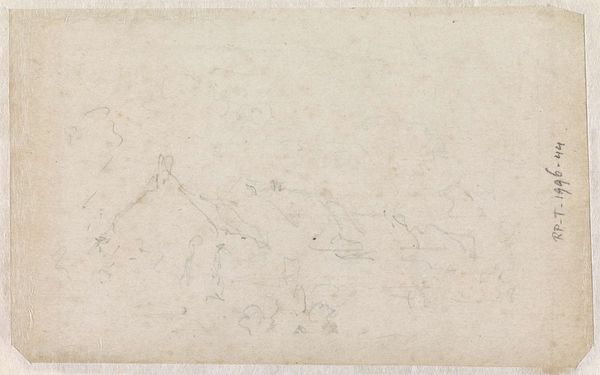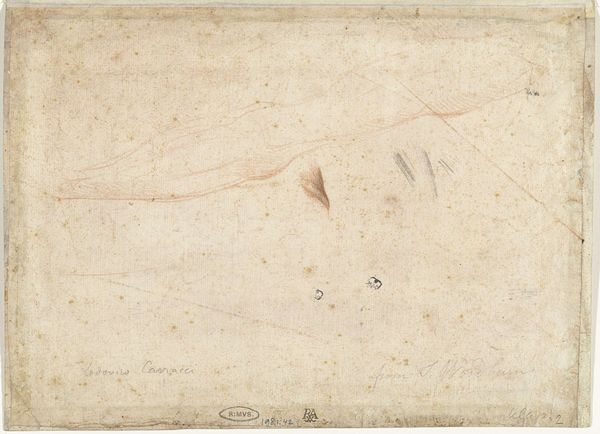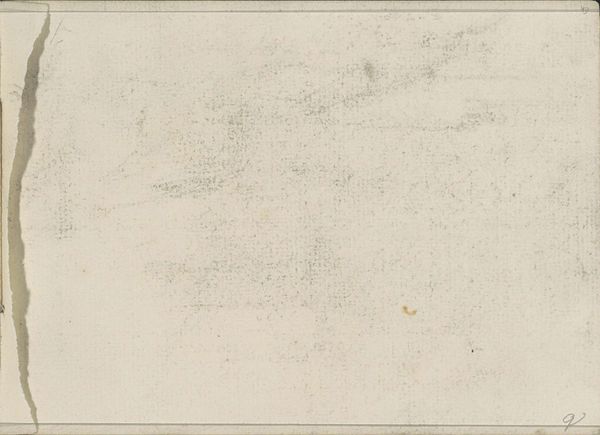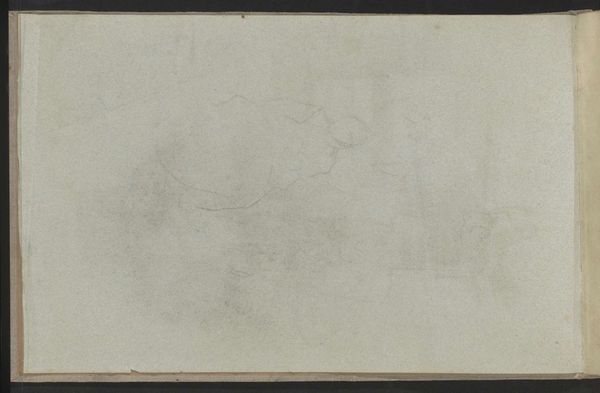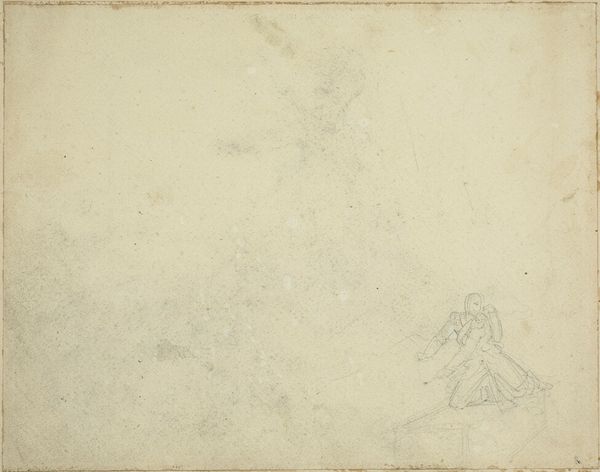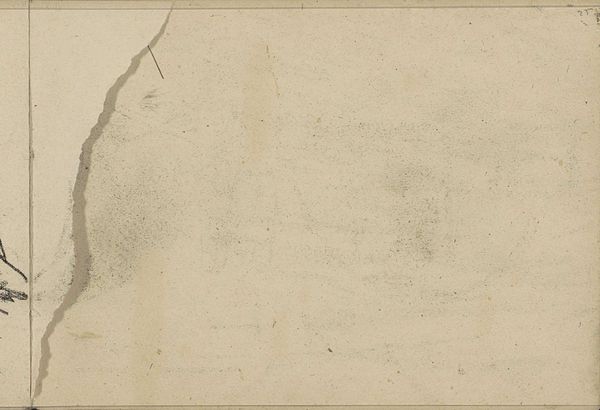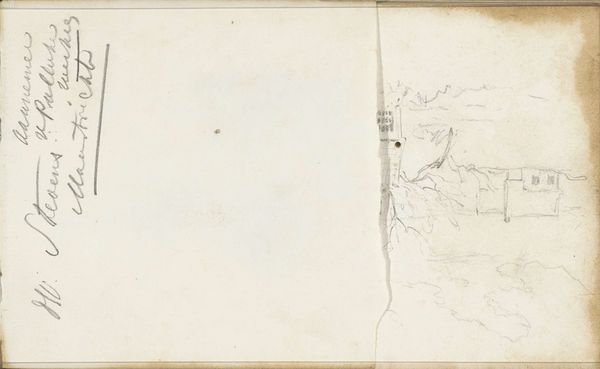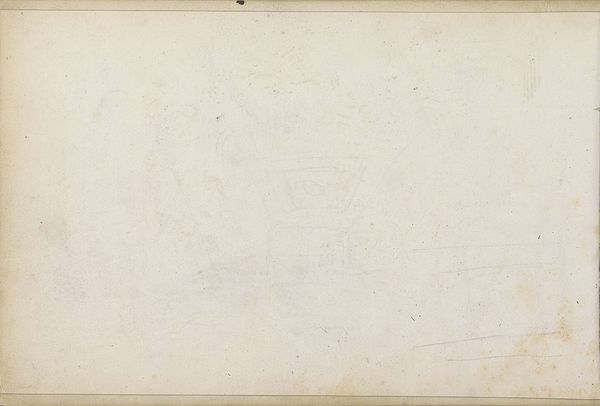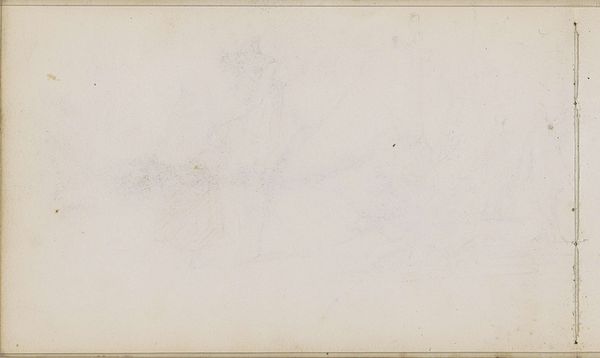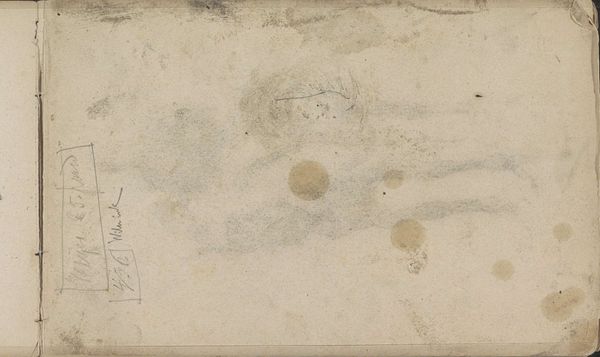
#
photo of handprinted image
#
aged paper
#
toned paper
#
light pencil work
#
water colours
#
possibly oil pastel
#
underpainting
#
watercolour bleed
#
watercolour illustration
#
watercolor
Copyright: Rijks Museum: Open Domain
Curator: So, standing here, we're looking at something quite unique by Johannes Tavenraat. This is an "Abklatsch van de potloodtekening op pagina 12 recto"—a transfer of a pencil drawing—created in 1839. It's part of the Rijksmuseum's collection. Editor: Wow, my first thought is, that’s like staring into a whisper. The muted tones and vague forms... it feels like capturing the memory of a drawing, a shadow of something once clearly seen. Is there any visible shape to grab onto? Curator: Exactly! That "whisper" reflects the process itself. The "Abklatsch" was a technique used to preserve or replicate drawings, particularly preliminary sketches. You transfer the original image onto another surface. What’s visible here isn't the original intent, but almost a record of it, offering art historians insight into his creative methodology at that period. Editor: The word "methodology" might feel grand for what feels so ephemeral. I almost want to reach out and blow the image away like dust. I mean, what are we even looking at? It feels almost accidental... Curator: Well, not quite accidental. There's intention behind preserving a drawing through transfer. It may allow artists a backup of a piece for reuse, archiving, or reworking. Consider this existing within the art ecosystem of the 19th century. Artists, often working on commission, sought ways to both safeguard their work and leverage their preparatory sketches for future creations. Editor: That’s interesting - thinking about "intellectual property" for art way back then! The aged paper adds a layer of nostalgia. I imagine the artist meticulously, delicately peeling back the layers to reveal the final picture of... what, exactly? A ghost of a landscape? The phantom of a portrait? Curator: It's intentionally enigmatic. What this work suggests isn't just artistic creation but speaks to the entire process of archiving, displaying and disseminating. Who decides which images are displayed, stored, preserved, and made public? This piece encapsulates that question, still essential in museum spaces and curation decisions today. Editor: It kind of pulls you in and dares you to reconstruct something out of nothing. Like those optical illusions, where you have to relax your eyes to find an image... Curator: Precisely, and through the act of looking and questioning what isn't there, you begin to realize your own engagement with art is historical itself. Editor: And here I was just trying to see a horse or something. I suppose that makes it all the more evocative. I now think there’s something profound in these artistic whispers, and the layers of history ingrained within. Curator: Indeed, what was not intended as art, but is archival or an image-making mechanism can be incredibly revealing when appreciated in that context.
Comments
No comments
Be the first to comment and join the conversation on the ultimate creative platform.
